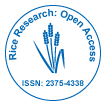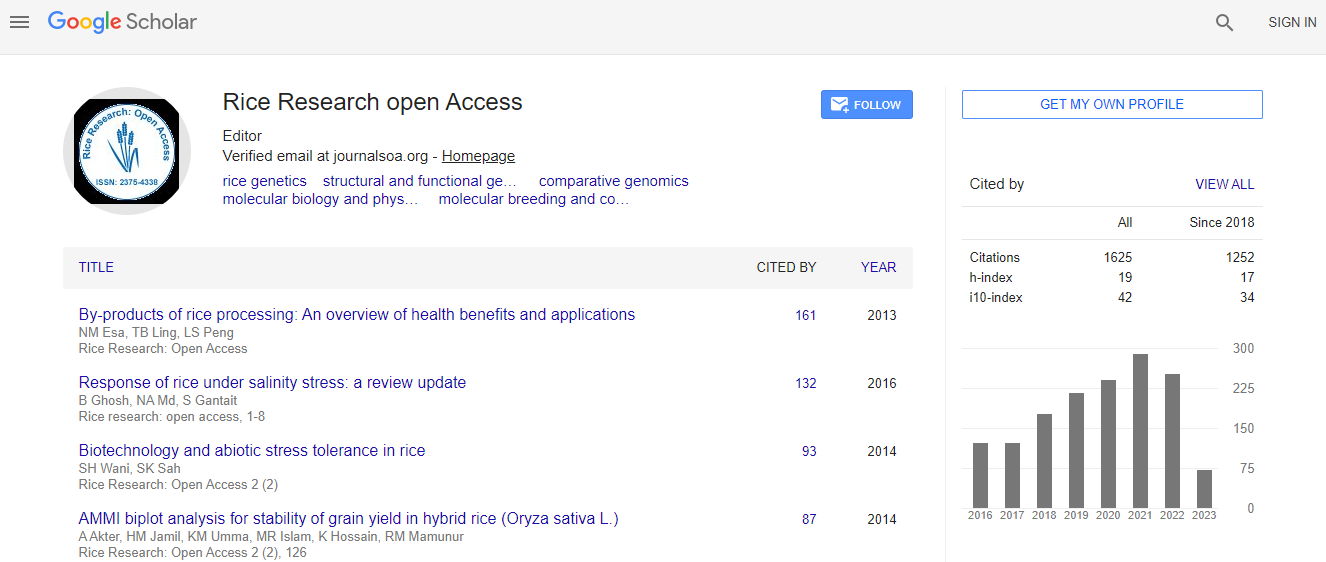Assessment of Some Rice (Oryza sativa L.) Genotypes for Salinity Stress Tolerance Using Morpho-Physiological and Molecular Analysis
*Corresponding Author: Bashir Mohammed Mayaki, Department of Plant Biology, Bayero University, Kano, Nigeria, Email: mayakibashir@gmail.comReceived Date: Sep 30, 2023 / Published Date: Jan 29, 2025
Citation: Mayaki BM, Sani LA, Abubakar U, Mohammed JS, Mohammed N, et al. (2025) Assessment of Some Rice (Oryza sativa L.) Genotypes for Salinity Stress Tolerance Using Morpho-Physiological and Molecular Analysis. Environ Pollut Climate Change 13: 449.
Copyright: © 2025 Mayaki, et al. This is an open-access article distributed under the terms of the Creative Commons Attribution License, which permits unrestricted use, distribution and reproduction in any medium, provided the original author and source are credited.
Abstract
The rice plant is salt sensitive and its productivity is severely affected by the accumulation of soluble salts in soils. Salinity is an ever increasing problem that reduces rice yield in rice producing areas. The arid and semi-arid zone of Nigeria where irrigation practices is widely adapted faces the most serious ecological and environmental problems ensuing from high saline soil conditions. Identification of salt tolerant rice genotype is one of the solutions to the problem of salinity. A study was conducted under a controlled environment in the department of plant biology and centre for dry land agriculture of Bayero University Kano, to evaluate the responses of six rice genotypes at four levels of NaCl concentrations (0 dS/m, 4 dS/m, 8 dS/m and 10 dS/m). Data were collected on plant height, leaf chlorophyll content, shoot fresh and dry weight, root fresh and dry weight, tiller per plant, panicle length, panicle number grain yield per pot and 1000 grain weight and were subjected to analysis of variance for mean comparison. The result of analysis of variance revealed that the parameters measured were negatively affected for all varieties at different concentrations except at (0 dS/m) which is the control. The most effect was observed particularly in the range of 8 to 10 dS/m. FARO 44 and FARO 67 outperformed other varieties with respect to the data collected as they appeared to be moderately tolerant to the induced stress. This could be attributed to their inherent genetic characteristics. Four candidate genes (OsMYB6, OsGAMYB, OsHKT1;4, and OsSUT1) reported to contribute to salinity tolerance in rice were selected and identified in some of the studied rice varieties. The presence of all four genes were detected in FARO 44 and FARO 67, these genes are believed to have contributed to their outstanding performance under the salinity stress thereby contributing to their tolerance potential, although the genes were also present in some of the susceptible varieties, their expression might have been suppressed hence their poor performance under the salt stress.

 Spanish
Spanish  Chinese
Chinese  Russian
Russian  German
German  French
French  Japanese
Japanese  Portuguese
Portuguese  Hindi
Hindi 
